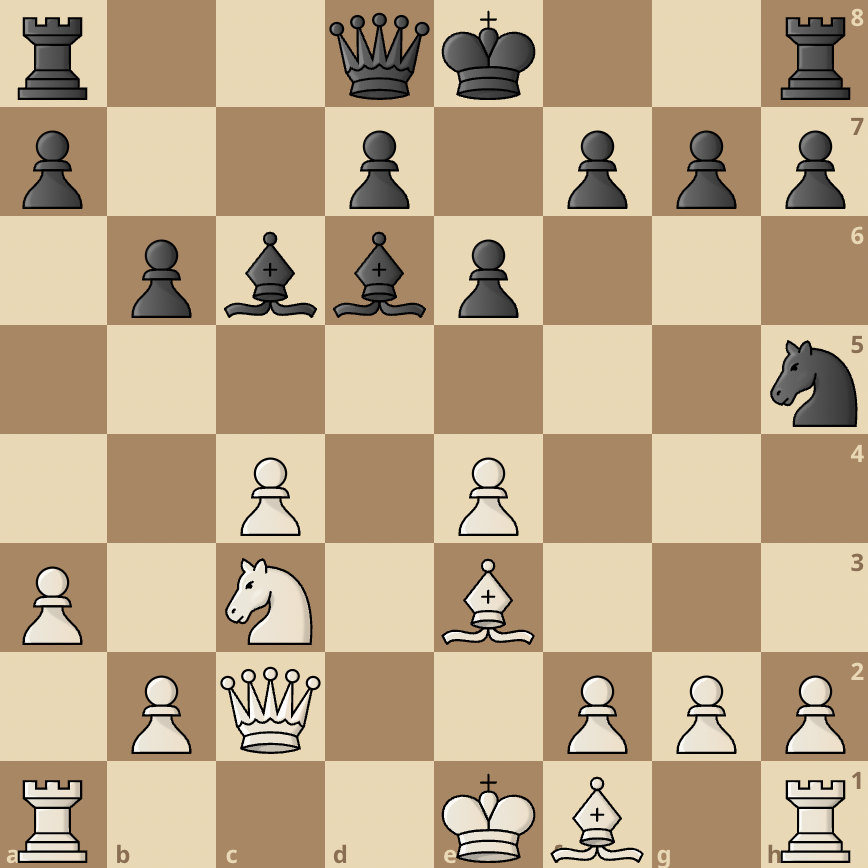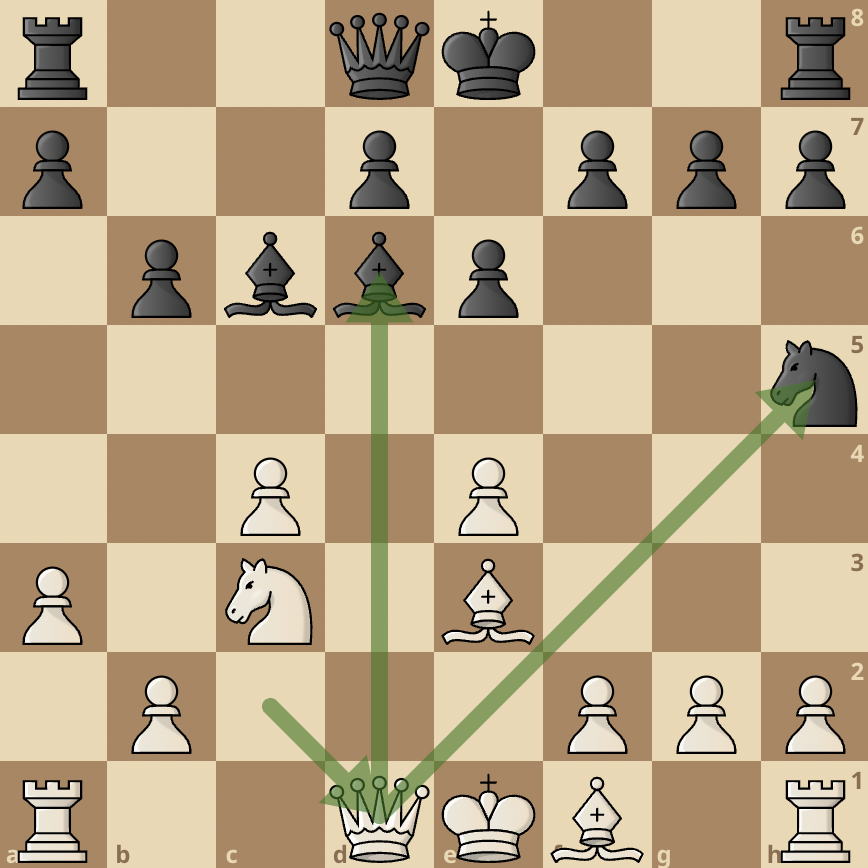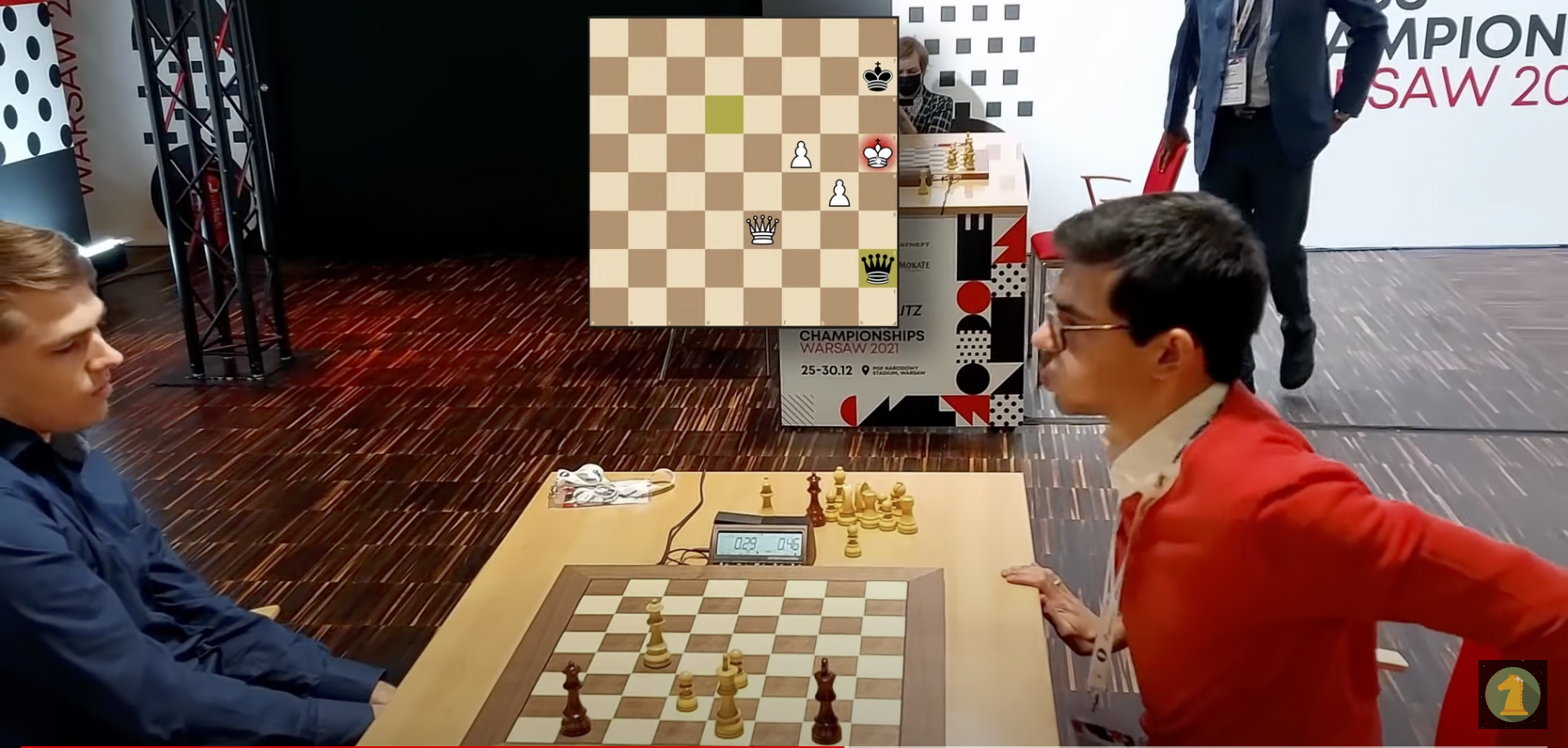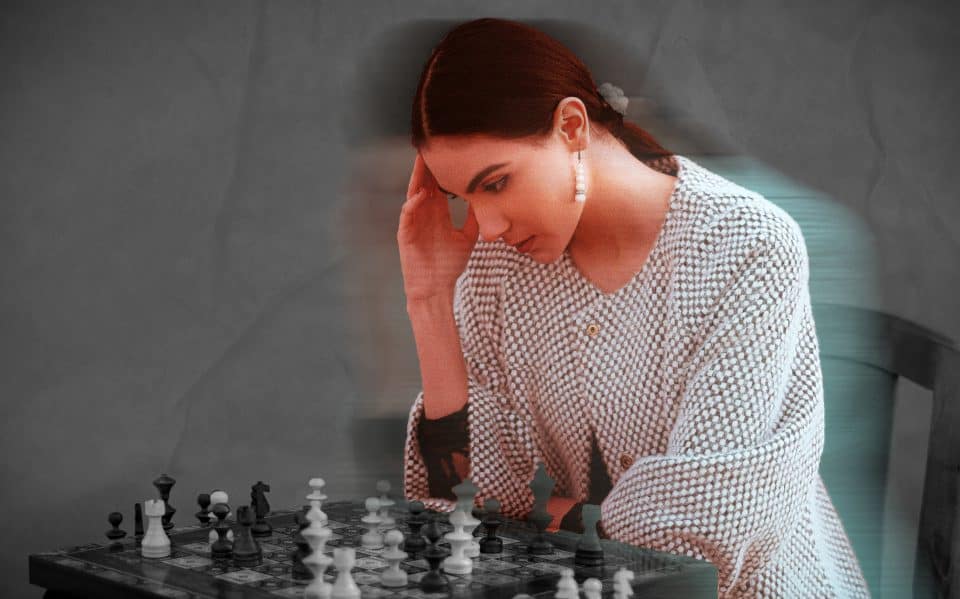We’ve all been there.
Moving your rook to a3 only to remember that you left your bishop on c1 hanging but it’s too late. Your opponent captures it and you resign.
Sounds familiar?
Blunders suck but the good part is that no chess player is immune to blunders, not even the world #1 player Magnus Carlsen.
Here’s an example of how a former world chess champion lost in just 12 moves!

In this game above between Larry Mark Christiansen (White) and Anatoly Karpov (Black) played in 1993, Karpov makes a terrible blunder by moving his dark-squared bishop from f8 to d6.
Can you find the winning move?
Christiansen understands that two black pieces are without protection – the bishop on d6 and knight on h5. What better way to win any of them than to simply retreat the White queen to d1 threatening both pieces.

Karpov not finding a way to save both pieces simply resigned. For context, Karpov was 2600+ rated yet had this huge oversight.
We showed you this game to explain that blunders happen to the best of us.
But what can be done about it?
Let’s go through possible solutions:
Avoiding Blunders in Chess
Blunders may occur as a result of any of these situations:
- You don’t know any better and make a weak move from lack of understanding or experience.
- You know better, but had some sort of mental lapse or self-delusion. This can be a simple error in calculation or a complete misapprehension of the position.
- An attitude that has an adverse effect on your understanding of the game (e.g hubris, paranoia, fear, irrational exuberance, e.t.c.)
For each of these situations, there are different advisable approaches you can take to effectively manage these blunders.
Take up games where you blundered and study them.
If the blunders were caused by lack of understanding or lack of experience, studying and learning more is the way to go. This will at least help to reduce your blunder rate to a reasonable extent.
Most players blunder in the opening. If this is you, you can start by creating a solid opening repertoire.
To do this, you should write down all the openings that you know or are interested in, and then check your previous games to see which openings you played and how well you did with them.
Then you make a list of all the possible defenses that you are familiar with. Share these lists with your chess coach or plug them all in a chess engine if you don’t have a coach – the idea is not to find the best sequence of moves but to understand the ideas, plans and tricks/traps present in the openings so you can play well every single time.
The more comfortable you are in around the first 10–15 moves of the game, the less likely you will blunder a piece at the beginning of your games.
After creating a solid opening repertoire, you need tactics training with a focus on middlegame tactics.
Tactics is one of the important components of chess. It allows you play with a variantly-aggressive style, which makes your opponent wearier and more prone to committing blunders or playing inaccurately.
Beware, tactics is a double-edged sword, as they can also expose you to blunders. This is why you need to train your tactical skills and sharpen your calculation ability regularly. If you practice enough, you can avoid common blunders more easily.
Focusing on tactics that fit your opening repertoire will make your life easier in the middlegame, as you will be familiar with the typical patterns and motifs. Everyone loves a good middlegame as it gives you an advantage going into the endgame.
Finally, study endgame theories! This is very important. Although many games finish in the middle game, a lot of games end up with just the king and some pawns, or the king and a few other pieces.
It is not uncommon to see players, even top grandmasters blunder their winning position to a draw in the endgame, or worse still lose despite being up on material.

In the image above, we see Rasmus Svane, a strong German grandmaster lose against super grandmaster Anish Giri in a completely winning position during the 2021 FIDE World Rapid & Blitz Championship held in Warsaw, Poland.
White’s last blunder was Kh5 which loses to Qh2+ and after White plays Kg5 (the only available move), Black checkmates with Qh6#. All completely forced.
Shows you how possible blunders can happen in the endgame. You don’t want to fall into a situation where you spend hours maintaing your advantage only to throw it all away with a single move in the endgame.
Some study materials recommended for endgame study are;
- The 100 endgames you must know by Jesus de la villa
- Endgame challenge by John Nunn
- Fundamentals of chess endings by Frank Lamprecht and Karsten Muller
- The chess endgame study by John Roycroft
The more solid your endgame theory is, the more likely you can oust your opponent.
No One is Blunder Proof
You can know your opening theories, middlegame tactics and endgame theories by heart but still blunder. It’s very much possible.
We are humans after all, and our calculations cannot always be precise. Blunders may occur due to a simple error in calculation, misapprehension of the position or even a mental lapse.
Take a look at this game below played between Vallejo Pons and Magnus Carlsen. It was the first phase of the Grand Slam Finale, Sao Paolo, 2011.
Vallejo is a strong, solid GM. He has been one of the top 100 players in the world since 2002. but has never been able to perform consistently well against top GMs, let alone the number 1 player.
Having lost to Aronian and Nakamura in the first two rounds of the tournament, Vallejo faced the worst possible rival in the third round.
(Touch the moves or move the board around for a better interactive experience.)
After the opening, Carlsen was starting to dominate the game as expected. Vallejo was thinking too much and entering the kind of complicated positions where Carlsen always triumphs, especially against lesser rivals like him.
Then it happened. Carlsen sort of had a mental lapse and left a bishop hanging. Vallejo took advantage of the situation and won the game after a few more moves. Despite having the upper hand for most of the game, Carlsen couldn’t equalize after the blunder.
This is proof that even top GMs do blunder and no one is free of blunders, so don’t bite yourself too much.
When your understanding of chess has advanced to a certain level, you desperately want to avoid blunders because they make you look stupid. And no one wants to be seen as a clueless player who can fall into the most basic tactical trick, or worse, a player who simply misses the whole thing.
Since blunders are unavoidable, it is advisable that you keep your ego under control by making blunders work for you (aka turning your lemon into lemonade). Blunders remind you that you are human after all, that you shouldn’t think too highly about yourself.
Over time, your collection of blunders will provide you with enough experience to avoid them, or at least, be aware that you might blunder at any time, repeating that horrible sensation that shatters your ego.
In other words, the scare of blundering will make you much more vigilant.
There is no training for not committing blunders. Just enough playing experience will help you on that, but you will never get rid of them completely.
The most important thing is to recognize them as accidents or injuries. The ability to recover from them is more important than the blundering itself.
Carlsen shows a very good example by proceeding to win the tournament on tie breaks edging out Vasyl Ivanchuk. He demonstrates that recovering fast from your loss and playing better games is the only way to achieving great results.






join the conversation